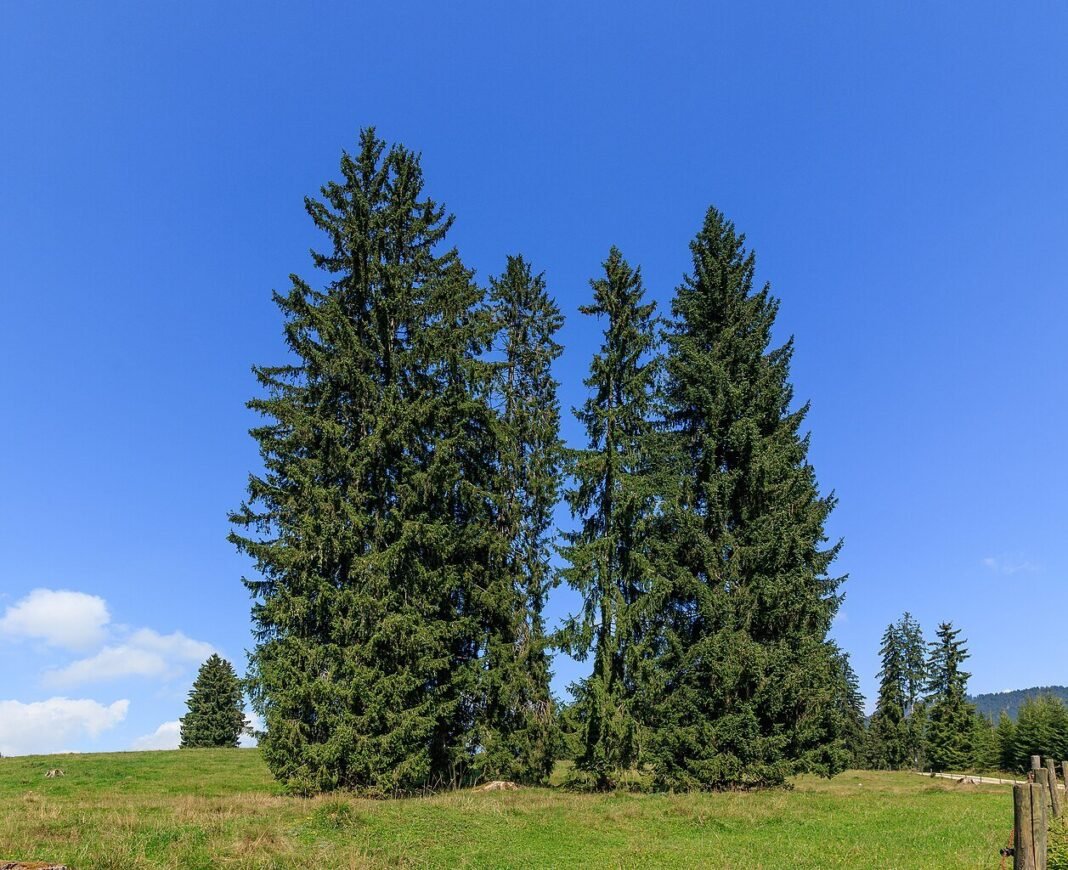
A group of spruce trees in northern Italy showed signs of synchronized electrical activity before and during a solar eclipse, offering fresh insight into how trees may sense and respond to environmental changes.
The findings, published in Royal Society Open Science, come from a team led by Professor Alessandro Chiolerio of the Italian Institute of Technology and Professor Monica Gagliano of Southern Cross University in Australia.
The study explored whether trees respond collectively to the rapid shift in light caused by an eclipse.
Researchers monitored the trees’ electrome during the eclipse
The team conducted the study on Oct. 25, 2022, during a partial solar eclipse in the Costa Bocche forest in the Dolomites.
Researchers measured the trees’ electrome—a term referring to the electrical activity produced by ions (charged molecules) moving across cell membranes in living organisms. Much like animal nerve signals, this bioelectrical activity helps coordinate internal cell communication.
Scientists monitored this with custom-built sensors connected to electrodes placed on three living Norway spruce trees (Picea abies)
The two trees were approximately 70 years old, while one tree was 20 years old. Sensors were placed in various parts of each tree, including exposed roots, branches, and trunks, targeting both the inner (xylem) and outer (phloem) tissues.
The study also included five nearby tree stumps, remnants of older trees damaged in a storm years earlier, to see if non-living structures showed any signs of activity.
Trees showed synchronized bioelectrical potentials
Researchers measured bioelectrical potentials, which are small voltage differences across cell membranes. These potentials are driven by ion exchange and are key to cellular signaling in all living things.
Wood Wide Web Sings• Ancient Spruce Trees Steer Forest’s Bioelectric Dance for Solar Eclipse. In the Dolomite mountains, spruce trees orchestrate a forest-wide symphony, their bioelectrical signals harmonizing hours before a solar eclipse.
Older trees, wise conductors, lead… pic.twitter.com/SXncMFEou3
— Nirmata (@En_formare) April 30, 2025
The sensors detected something surprising to the team. The trees didn’t just respond to the eclipse—they appeared to anticipate it. Hours before the sunlight faded, the trees’ bioelectrical signals became increasingly synchronized. This pattern continued throughout the eclipse. The two older trees showed a stronger and earlier reaction compared to the younger tree.
This level of pre-response suggests that older trees may have developed adaptive mechanisms to recognize and prepare for cyclical natural events, similar to how they respond to seasonal shifts.
Stumps revealed faint bioelectrical responses
The tree stumps also showed changes in electrical activity, though far weaker than the standing trees. Researchers believe this indicates some remaining physiological activity, suggesting the stumps are not entirely dead.
Earlier research has shown that stumps can survive when supported by neighboring trees through shared root systems.
Computer models confirmed forest-wide coordination
To verify their findings, the team used computer simulations and analysis techniques, including methods grounded in quantum field theory. These tools allowed them to evaluate complex patterns and connections in the electrome data across the forest.
The results confirmed their field observations: the trees’ responses were not isolated. Instead, their electrical signals were correlated, pointing to a cohesive, organism-like response at the forest scale.
Study supports the idea of plant communication networks
The research adds to a growing body of evidence that plants, particularly trees in forests, form interconnected networks capable of long-distance signaling. These signals may coordinate behavior in response to stress or environmental shifts, improving the forest’s resilience.
The findings also highlight the ecological importance of older trees, which may serve as pillars of stability and sources of ecological “memory.” Passing signals or cues to younger trees can help preserve knowledge of natural cycles over decades.
Scientists say protecting old-growth forests may be essential for maintaining the integrity of these living communication systems, not just for biodiversity.


